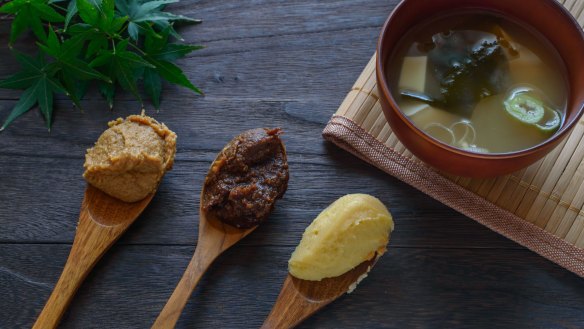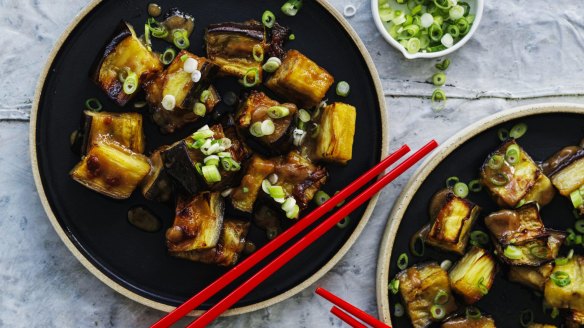Miso: Everything you need to know

What is it?
For the Japanese, miso is a foundation stone of their cuisine and culture. It marries soy and grain in a delicious fermented paste that has fed peasants, powered armies and now conquered the world.
Cooked soy beans are combined with a cooked grain – mostly rice but sometimes barley, rye or buckwheat – that has been fermented with a specific mould, Aspergillus oryzae, known in Japan as koji. Blended with salt, the mixture is left to mature in barrels, crocks or massive stainless-steel tanks, depending on the scale of manufacture, for at least a year and sometimes several.
Every step of the process is essential. The mould breaks down the starch in the grain into sugar, giving miso a sweet flavour. Normally, yeast or bacteria would ferment those sugars into alcohol or lactic acid, but the addition of salt prevents alcoholic or lactic acid fermentation. Enzymes break down proteins in the grains and soy beans into amino acids that we sense as delicious. Finally, naturally occurring salt-loving yeasts turn a little bit of the sugar into complex savoury flavours.
Why do we love it?
Salty, nutty, rich and savoury, miso has become familiar to us through Japanese dishes such as miso soup and nasu dengaku, or fried eggplant and miso. It is packed with all the essential amino acids we need to build our muscles and it is easy to digest.

Who uses it?
Yoko Nakazawa grew up in Saitama, north of Tokyo, making enough miso with her parents every year to feed their extended family. She now makes her own miso in the central Victorian town of Malmsbury, using home-grown soy beans and sea salt she has collected herself. "In Japan, miso is traditionally made seasonally when the grain and soy are harvested," she says.
However, Nakazawa makes miso year-round to sell online and at farmers' markets, mashing the soy using a suribachi and surikogi (mortar and pestle). "It is very meditative. Zen-like," she says. She uses brown rice, saying fermentation makes it easier to digest the whole grain.
How do you use it?
In Australia, as in Japan, shiro miso (also called white miso) made with white rice is the dominant style. Its mild flavour makes it perfect for smearing over fish with shoyu (Japanese-style soy sauce) and mirin (sweet rice wine) to make miso-baked fish.
Other types of miso include yellow and red miso, which are fermented longer, resulted in a more pungent flavour. Miso is full of salt and umami so use like stock cubes to add layers of flavour to soups, casseroles, sauces and even gravy. Blend with butter and slather over steamed new potatoes or carrots or add a tablespoon of miso to a vinaigrette to dress a salad of bitter greens.
Yoko Nakazawa recommends sourcing locally made, slow-fermented brown rice miso for breakfast soup, made by simmering dried mushrooms in water until softened, adding chopped greens such as wombok or spinach and, once soft, spooning in some miso.
Where do you get it?
Most supermarkets stock Japanese shiro miso. Look out for locally made miso in farmers' markets and organic food stores or order handmade Australian miso from cookingwithkoji.wordpress.com, riceculture.com.au or merumiso.com.
After more than 10 years of answering readers' vexing culinary questions, Richard Cornish has turned his focus to ingredients. Suggest an ingredient via email to brainfood@richardcornish.com.au or tweet to @foodcornish.
Appears in these collections
- More:
- Food
- Brain food
